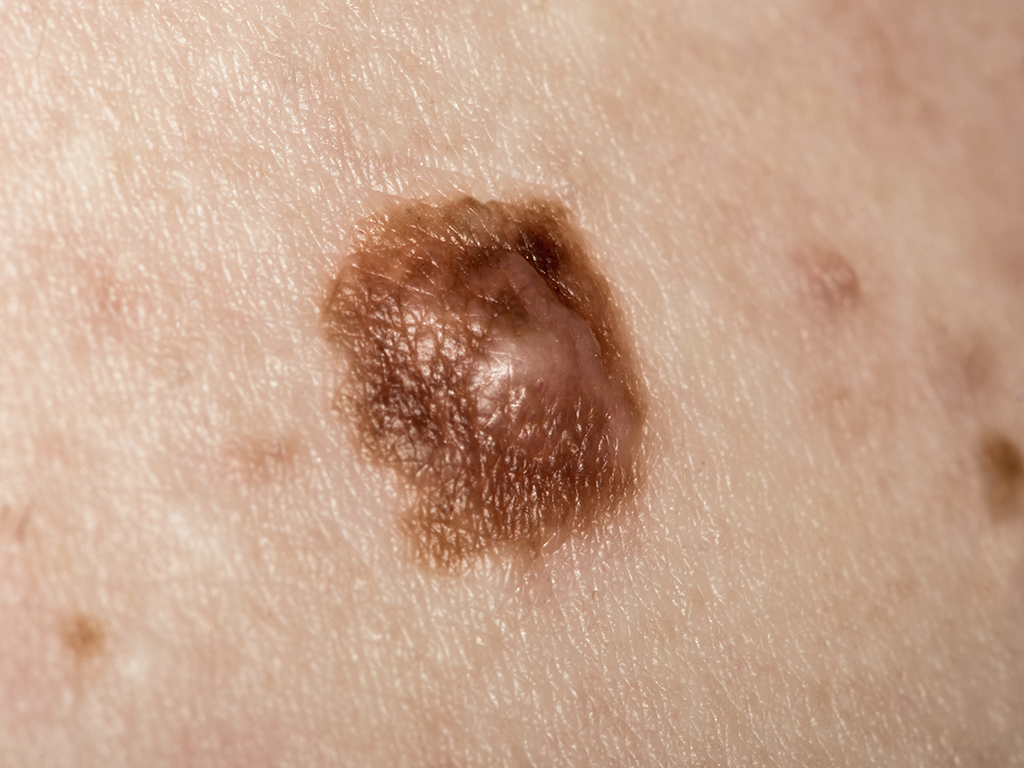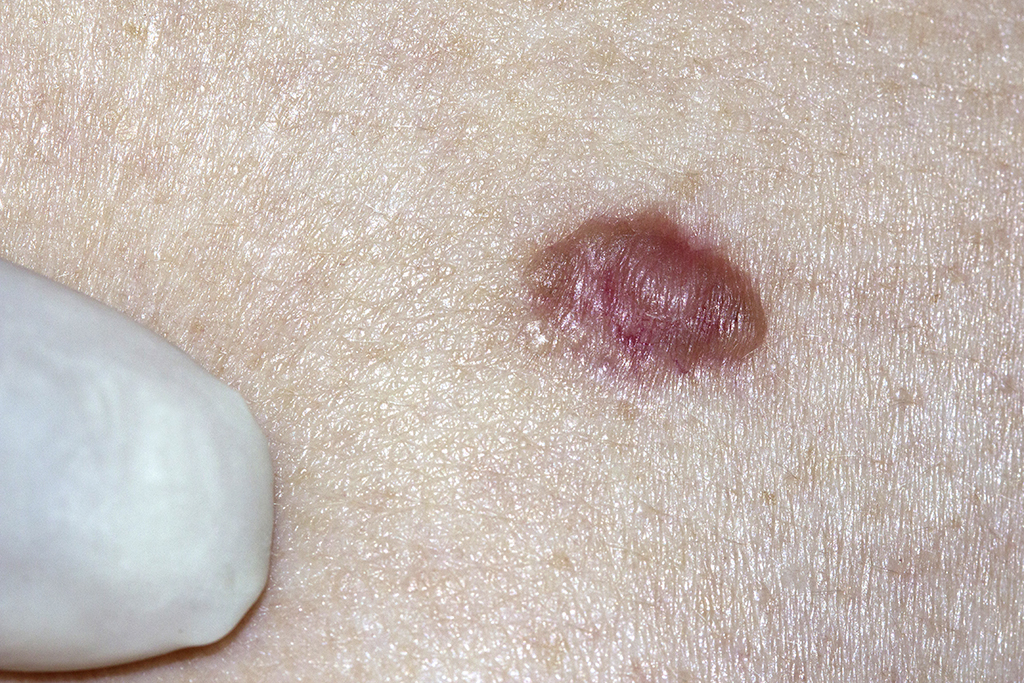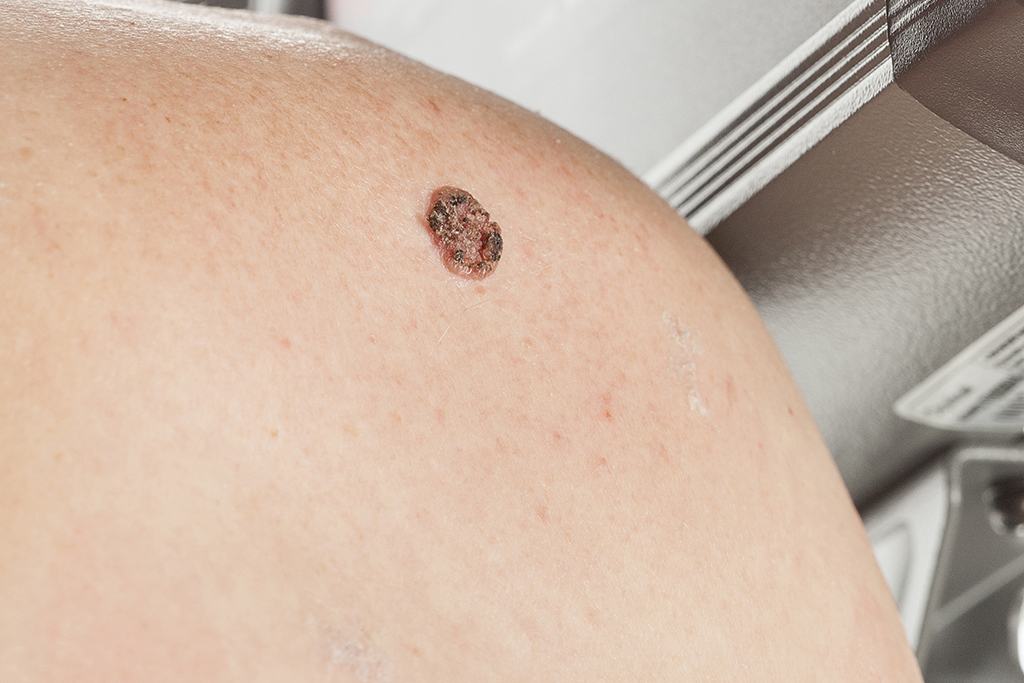Skin Cancers
Melanoma
Melanoma is the most serious and deadly type of skin cancer. Melanoma develops in the cells that produce melanin, the pigment that gives your skin its color. The exact cause of melanoma is not clear, but there are several risk factors associated with the development of melanoma.
Risk factors include:
- Exposure to ultraviolet (UV) radiation – from sunlight or tanning beds greatly increases the risk of developing melanoma.
- Moles – also known as a nevi, are benign (non-cancerous) pigmented tumors. Moles are not present at birth but begin to appear in childhood. Most moles never cause a problem, but people with numerous moles have an increased risk of developing melanoma.
- Dysplastic Nevi – often have some features of melanoma but are not cancerous. They are often larger than other moles and have abnormal shapes and colors. Some dysplastic nevi may develop into melanomas, but most melanomas seem to arise without a pre-existing dysplastic nevus. People who have numerous dysplastic nevi have a much higher lifetime risk of developing melanoma.
- Congenital Nevi – people born with a mole called a congenital nevus, have a higher lifetime risk of developing melanoma.
- Dysplastic Nevi – often have some features of melanoma but are not cancerous. They are often larger than other moles and have abnormal shapes and colors. Some dysplastic nevi may develop into melanomas, but most melanomas seem to arise without a pre-existing dysplastic nevus. People who have numerous dysplastic nevi have a much higher lifetime risk of developing melanoma.
- Family history of melanoma – melanoma risk is increased if you have one or more first degree relatives (parent, brother, sister or child) with a history of melanoma. This could be due to gene changes that run in families.
- Personal history of melanoma – About 5% of people who have had melanoma will develop a second melanoma at some point.
- Immune suppression – People who have weakened immune systems or take medications that severely suppress the immune system are at increased risk of developing melanoma.
Melanoma is curable when detected and treated early but can be fatal if allowed to progress and spread. We encourage regular and frequent self-skin examinations as well as periodic full-skin examinations by our Physician Assistant for early detection.
Basal Cell Skin Carcinoma
Basal Cell Carcinoma (BCC) is the most common form of skin cancer. The sun is responsible for over 90 percent of all skin cancers. BCC occurs most frequently on the sun exposed areas of the body. It often looks like an open sore, red patches, shiny bumps or scars. BCC can be highly disfiguring by damaging the skin around it and sometimes may invade bone and cartilage. Fortunately, it is exceedingly rare for BCC to spread to other parts of the body and become life-threatening.
Squamous Cell Skin Carcinoma
Squamous Cell Carcinoma (SCC) is the second most common form of skin cancer. Most cases of SCC are caused by long-term over exposure to the sun. SCC occurs most frequently on the face, neck, back, shoulders, back of hands, arm and ears. It often looks like scaly red patches or open sores. They also may crust and bleed.
Untreated, SCC can grow large and become disfiguring. A small percentage of SCCs can spread to distant organs and become life threatening.




